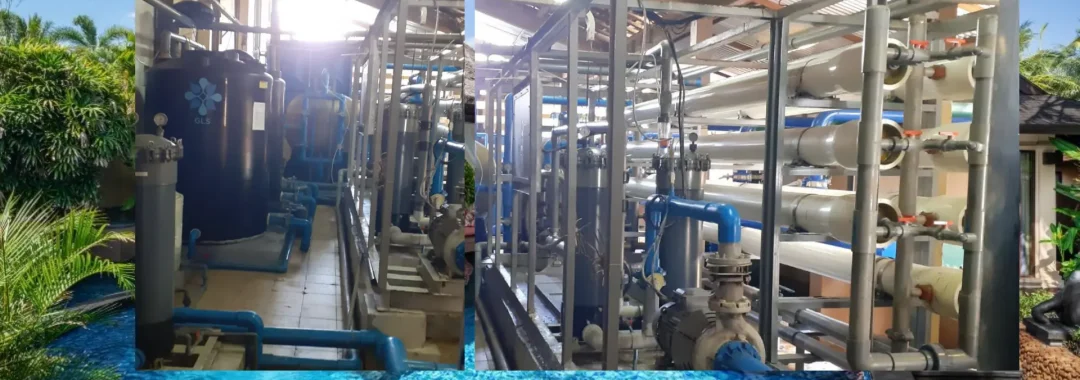Why Industrial Desalination Systems Matter in Hospitality
As water demand increases in the hospitality industry, ensuring a reliable and efficient clean water supply becomes essential. Industrial desalination systems are now key for hotels and resorts located in coastal areas. This case study presents how St. Regis Bali implemented a robust desalination solution combining Activated Filter Media (AFM) and Sea Water Reverse Osmosis (SWRO).
Problems Before Implementing Industrial Desalination Systems
St. Regis faced several operational challenges prior to upgrading its system:
- High frequency of RO membrane cleaning.
- Frequent cartridge filter replacement.
- Elevated turbidity levels.
- High suspended solids in raw seawater.
These issues increased operational costs and reduced efficiency, threatening consistent water quality for hotel operationsCase study GLS in St. Regis.
Technical Solution: AFM Filtration and SWRO Desalination
To address these challenges, the industrial desalination system was designed with two main steps:
AFM Filtration in Industrial Desalination Systems
- Seawater intake was filtered through AFM Grades 0, 1, 2, and 3.
- AFM effectively trapped suspended solids and organic matter.
- Regular backwash cycles removed impurities, keeping the media efficient.
- Research confirms that AFM outperforms traditional sand filters in reducing suspended solids and turbidity (ResearchGate).
👉 Learn more about our Water Treatment Supply services for industrial applications.
SWRO for Seawater Desalination
- After AFM pre-treatment, seawater was processed through SWRO membranes.
- With reduced turbidity and lower SDI, the RO membranes lasted longer and performed optimally.
- While SWRO is effective, it also faces environmental challenges such as brine disposal and energy use (ScienceDirect).
👉 See our Reverse Osmosis Membrane options for seawater and brackish water systems.
Results of the Industrial Desalination System at St. Regis
The installation delivered significant improvements:
- Turbidity reduced from 2–3 NTU to <0.1 NTU.
- SDI dropped from 4–5 to <3, protecting membranes.
- Suspended solids decreased from 5–8 mg/L to <1 mg/L.
- Clearer water quality, fewer cleanings, and reduced operating costsCase study GLS in St. Regis.
Capacity and Application of Seawater Desalination
- Location: St. Regis, Nusa Dua, Bali, Indonesia
- Year: 2022
- Raw Water Source: Seawater
- System Capacity: 450 CMD
- Targeted Removal: Organic matter, suspended solids, turbidity
For similar projects, explore our expertise in Seawater Treatment and Desalination Technologies designed for resorts, industries, and municipalities.
Future of Industrial Desalination Systems
As desalination demand grows, energy efficiency remains critical. Research shows that hybrid desalination systems, such as combining SWRO with Pressure Retarded Osmosis (PRO), can significantly reduce energy use (Frontiers in Water).
Conclusion
The St. Regis project proves how combining AFM filtration and SWRO desalination creates a sustainable and cost-effective water treatment solution. By lowering turbidity, extending membrane life, and reducing maintenance, this industrial desalination system ensures a reliable water supply that supports operational excellence in luxury hospitality.
Industrial desalination systems like this are vital for regions where seawater is the primary resource, offering both performance and sustainability.
